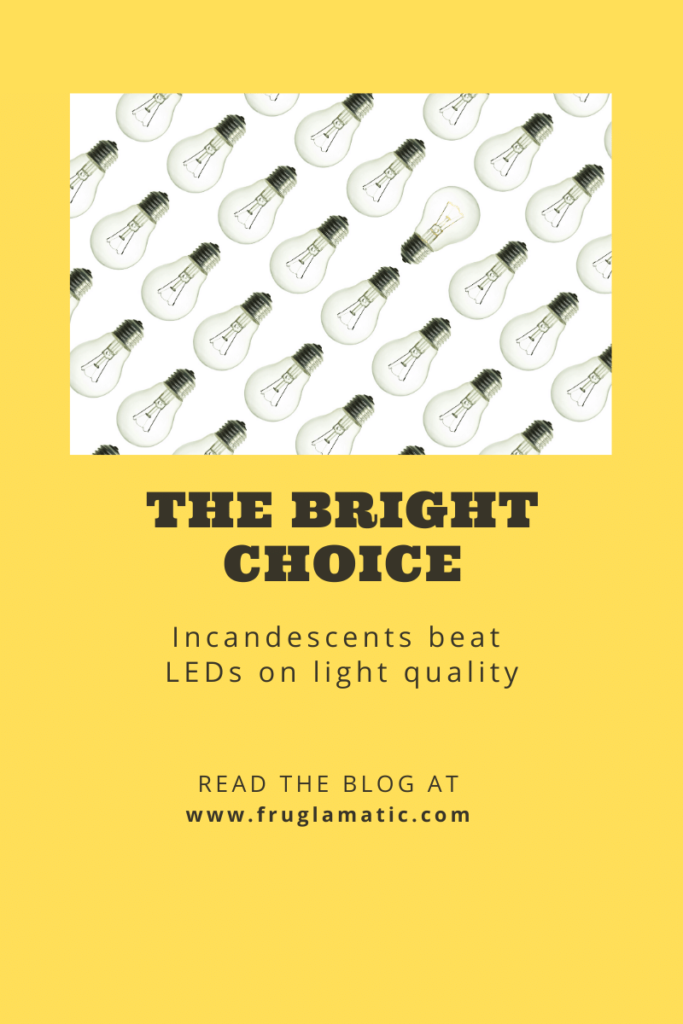This post was last updated on August 21st, 2020 at 12:44 pm
A weird thing happened on my way to switching our home’s lighting to LED bulbs: I started to miss my incandescent bulbs. I realized my desire to save energy was coming at the expense of light quality. Incandescents have their benefits.
I left the LEDs in the hallway, basement and some other rooms in place, but I found myself protecting certain fixtures and treating their incandescent bulbs as if they were an endangered species. When they burn out, I make sure to put in another incandescent.
From the standpoint of a frugal-living blog, defending incandescent bulbs doesn’t seem to make much sense. After all, LED bulbs are about 90% more energy efficient. But consider two spots where I’ve kept incandescent bulbs: above a bathroom mirror and at my work desk. These are areas where the quality of light matters.
Consider a bulb’s CRI rating
I did some research into the reasons for my reluctance to go all in for LEDs. Nostalgia alone isn’t the reason, I discovered. It’s my appreciation for incandescent bulbs’ near-perfect color rendering index (CRI) rating. Wikipedia defines CRI as a “quantitative measure of the ability of a light source to reveal the colors of various objects faithfully in comparison with an ideal or natural light source.” Essentially, incandescents are little suns giving off sun-like light.
It’s a confusing topic, but here’s one way to explain it: Every bulb has a temperature rating in degrees Kelvin. A standard incandescent bulb is about 2700K, which gives off a “warm” light. You might think objects under a 2700K LED bulb would look the same as they do under a 2700K incandescent bulb. But they might not because of the differences in the two bulbs’ CRI rating. In my experience, objects look “more natural” under incandescent bulbs, which explains why I’m sometimes reluctant to abandon them.When you get an incandescent bulb, you can be relatively certain about its lighting quality, even if it won’t last nearly as long as an LED.
LED pitfall: A bad bulb can last years
The problem in using an LED bulb with a low CRI rating is that you could be stuck with inferior lighting for many years, perhaps decades, because LEDs last so much longer than incandescents. The energy savings might not be worth it, especially knowing that lighting accounts for a fraction of the typical household’s electric bill—only about 10% in 2015, according to the U.S. Energy Information Administration. If you really want to achieve energy savings, consider other culprits, such as an old air conditioner or a lack of insulation.
When you think about how visual we are as human beings, it seems silly to sentence your eyes to years and years of poor quality lighting. I’m not saying to abandon all LED bulbs, as I have many in our home. But I encourage you to be picky about placing an LED in a spot where lighting quality is crucial. Or if you’re adamant about switching over to all LEDs, consider buying ones promoted as having a high CRI rating. You don’t want to invite any ordinary LED into your sockets.

